
Riyadh: The annual ritual of changing Kiswah (Ghilaf-e-Kaaba) at the Grand Mosque in Makkah takes place on Tuesday night, the first of Muharram, marking the beginning of the new Islamic year of 1445, the Saudi Press Agency (SPA) reported.
The process was carried out by the General Presidency for the Affairs of the Grand Mosque and the Prophet’s Mosque under the supervision of the President of the Presidency, Sheikh Dr Abdul Rahman bin Abdulaziz Al-Sudais.
The ten-step elaborate process of replacing the old cloth with a new handmade Kiswah involved 130 technicians and manufacturers.
Here’s a look
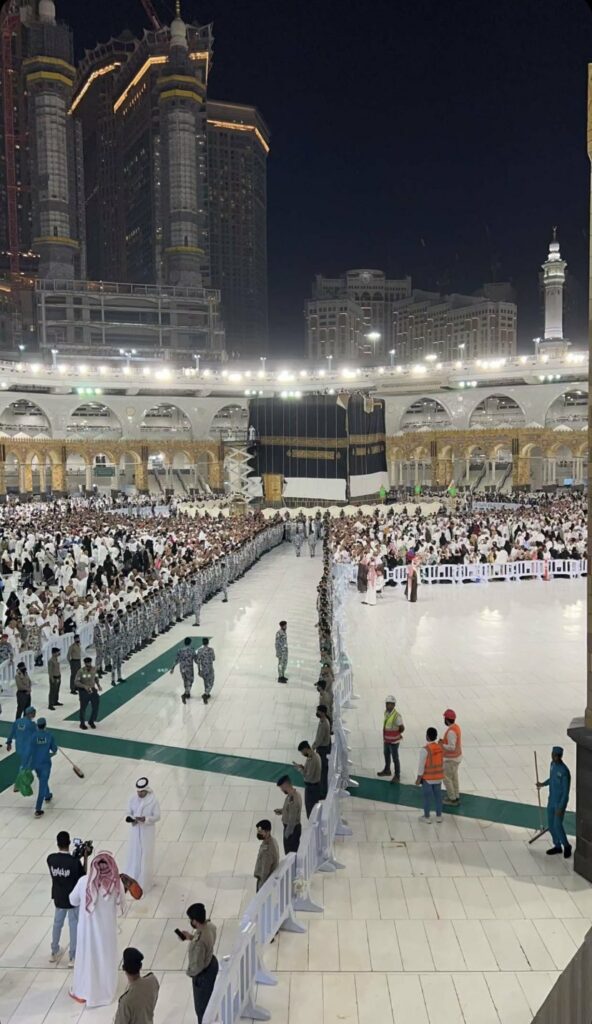
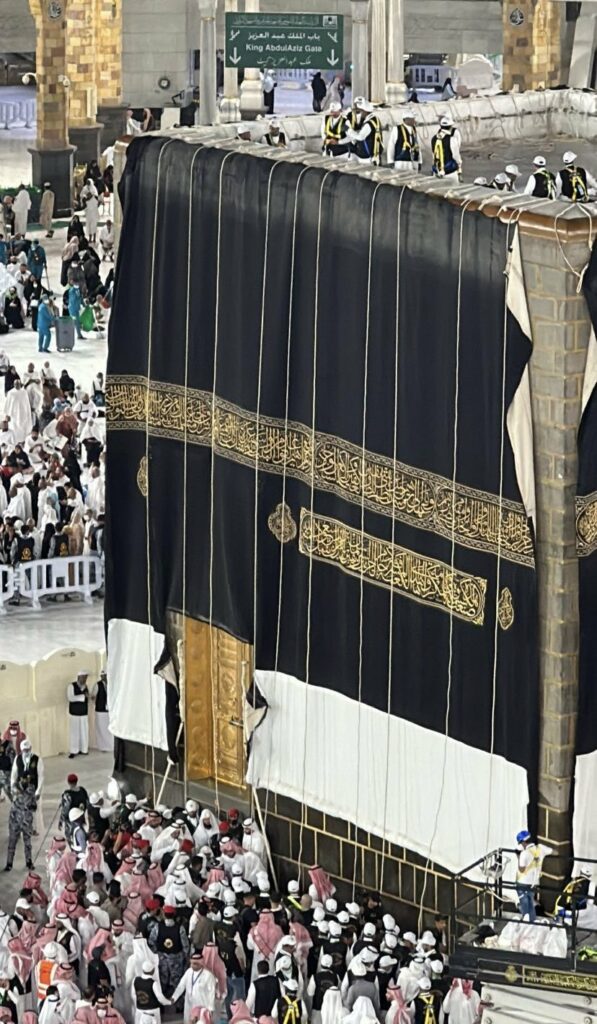
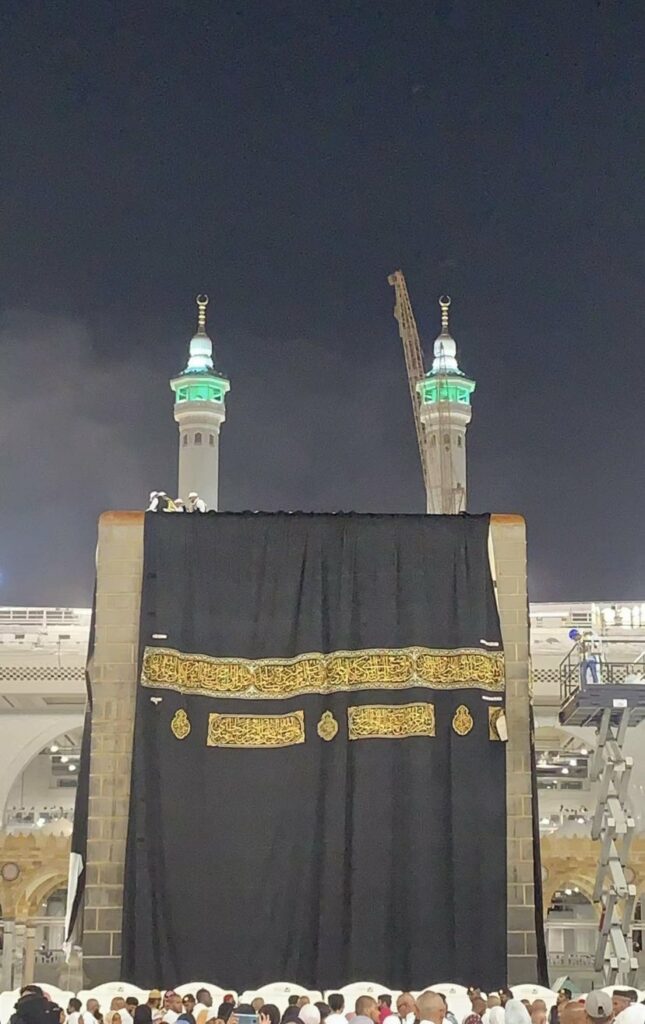
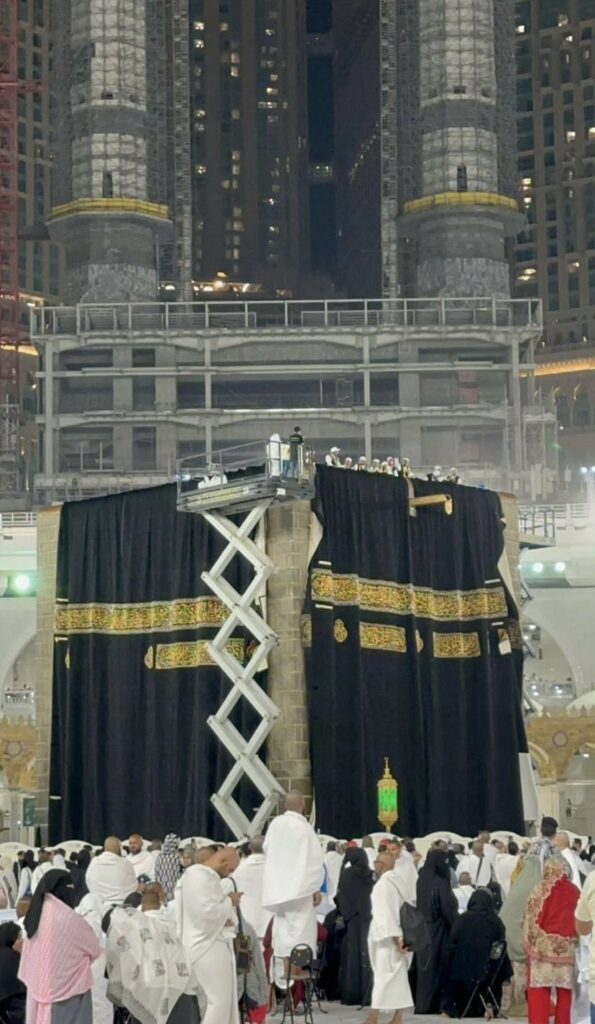
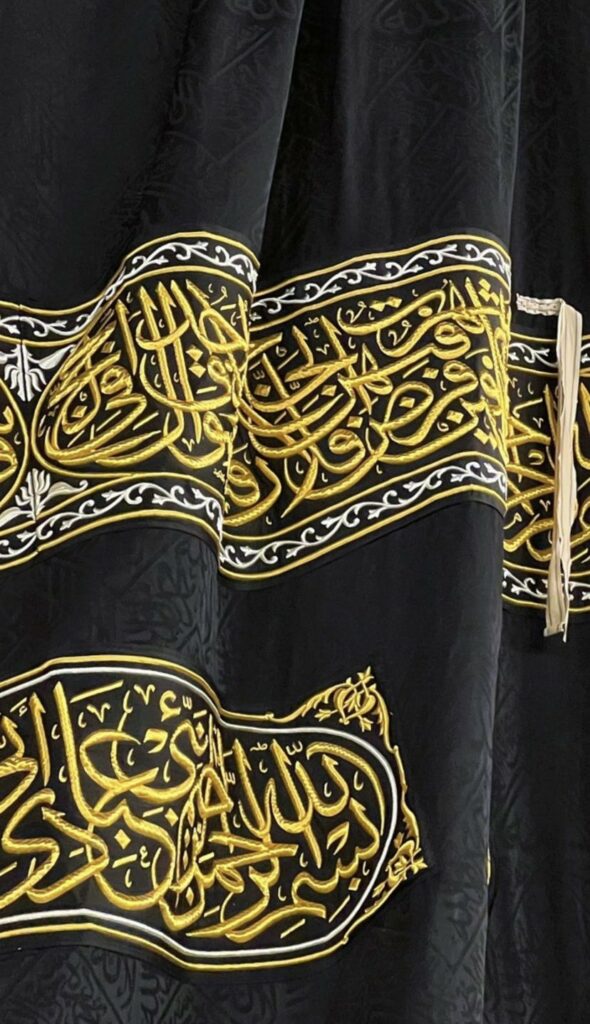
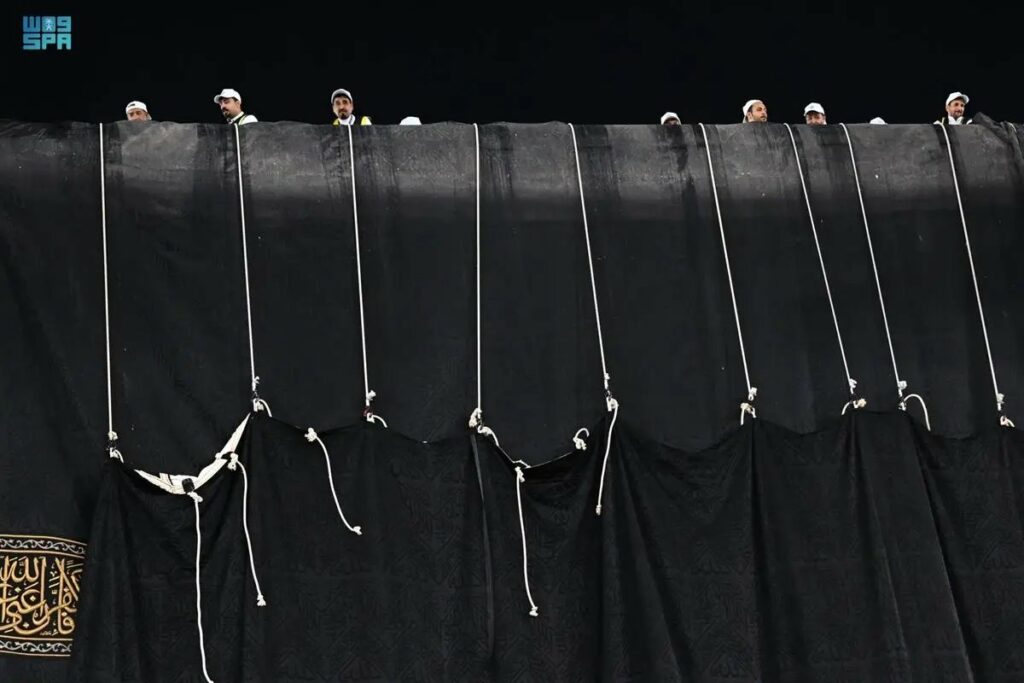
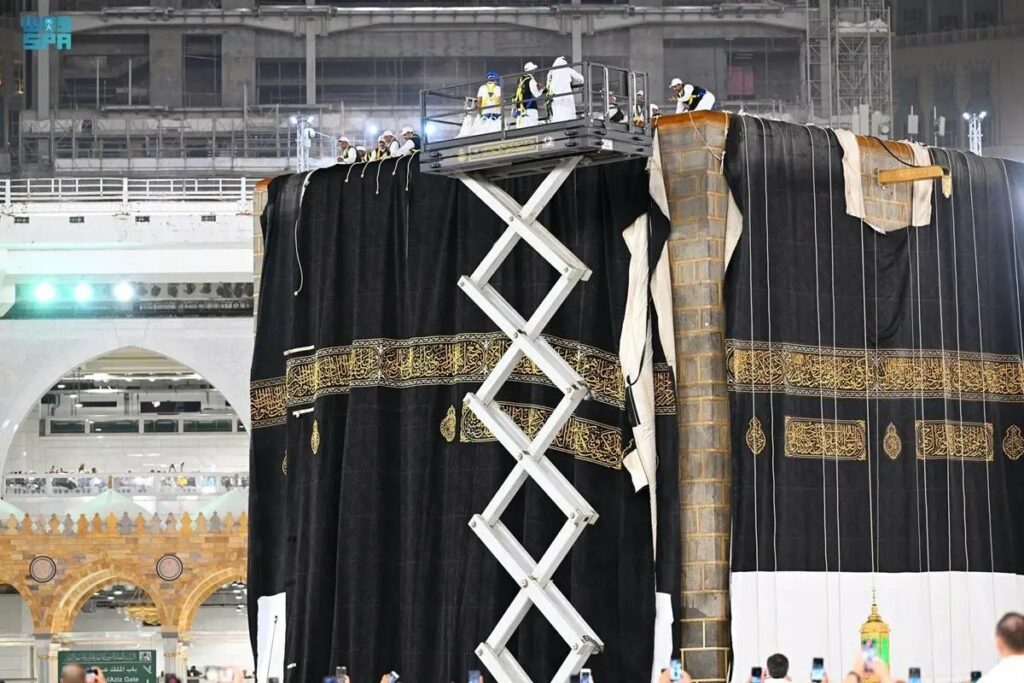
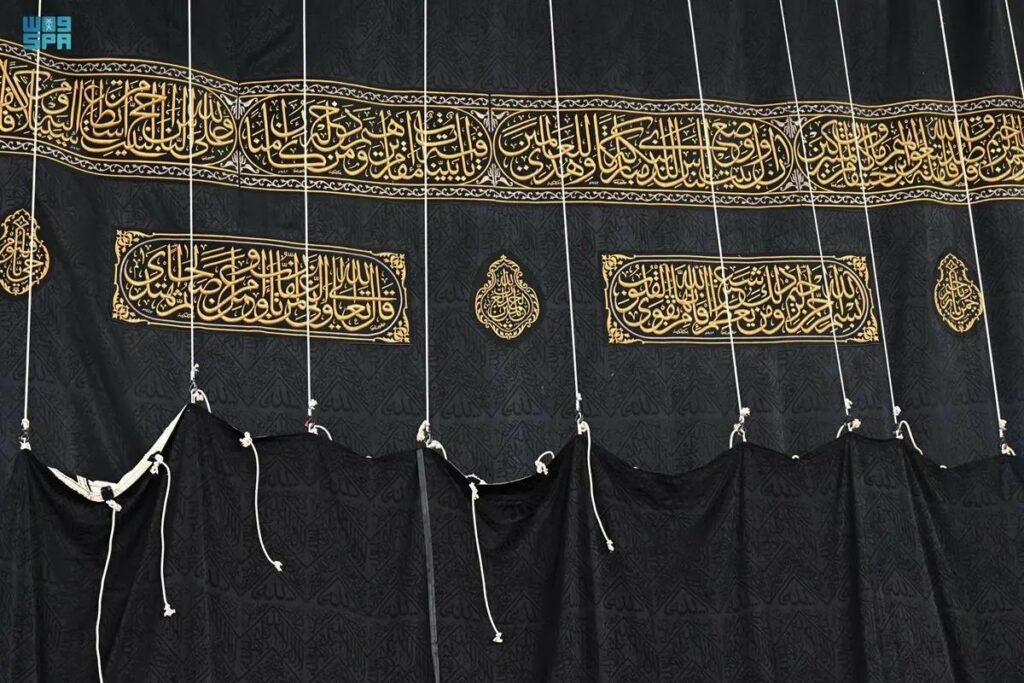
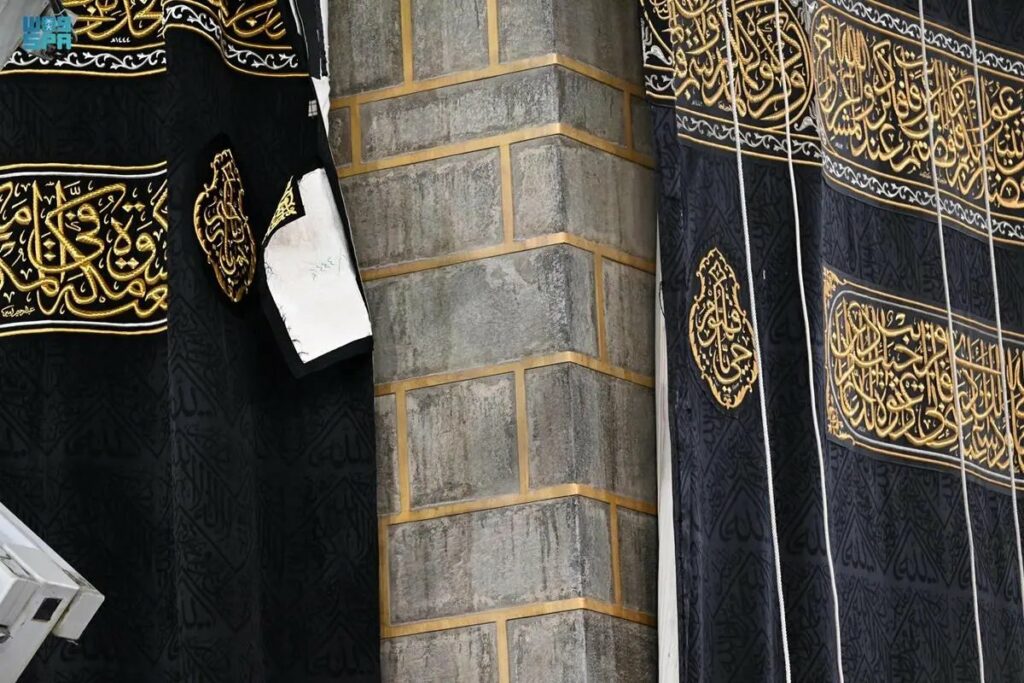
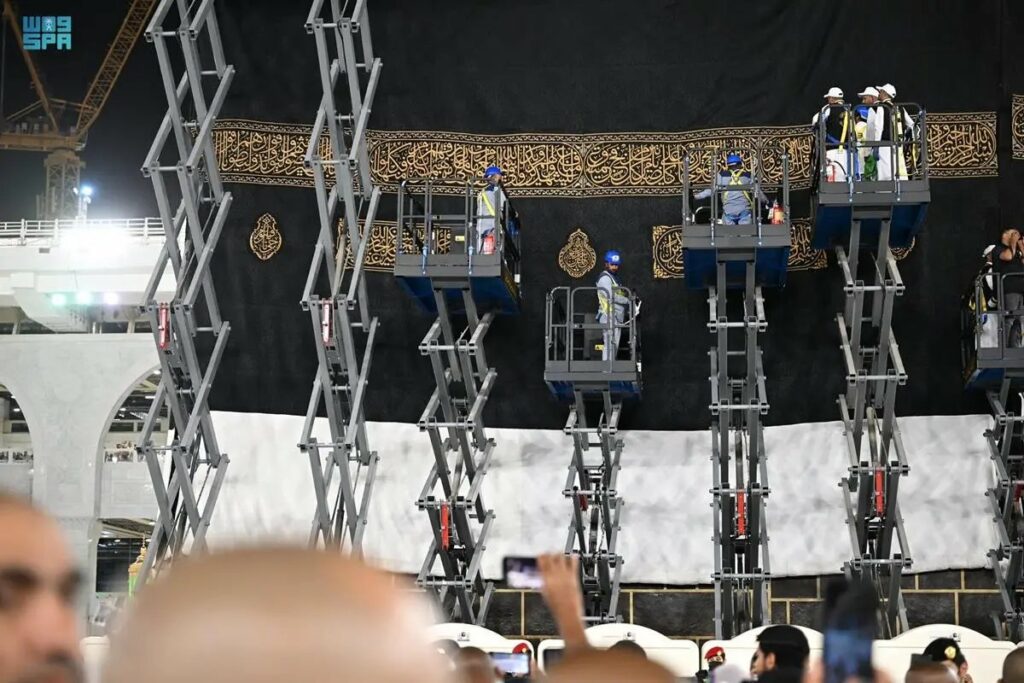
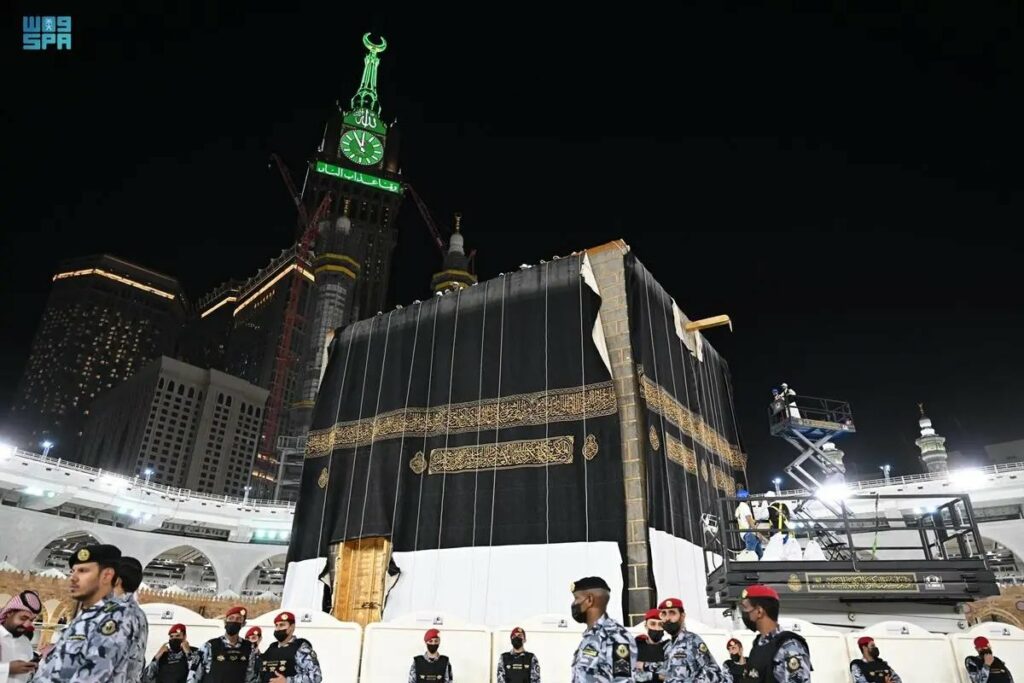
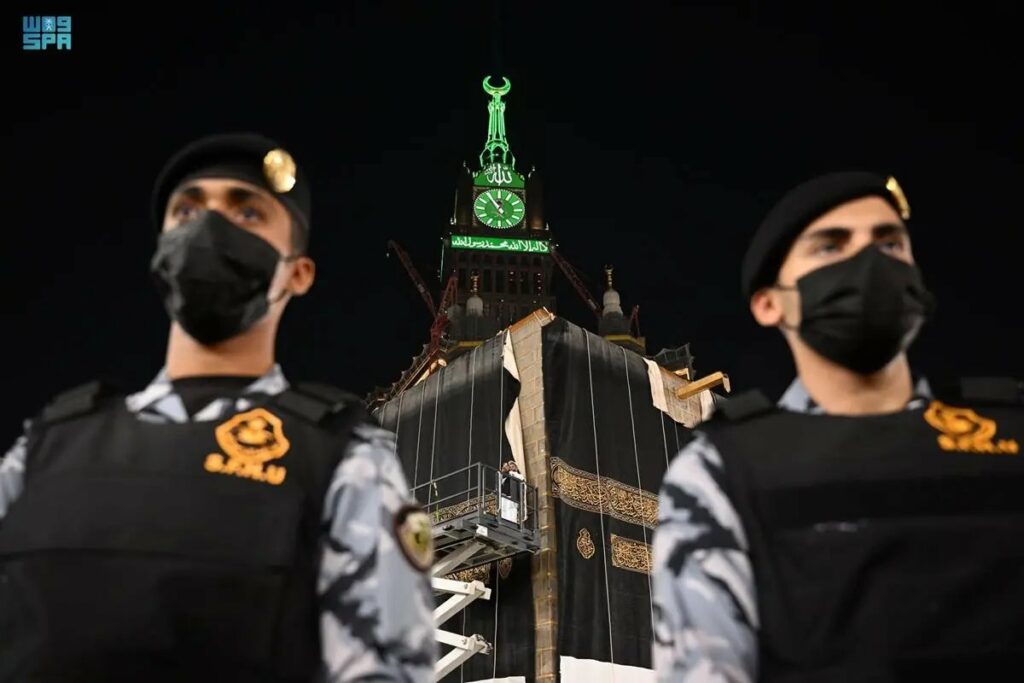
What is the Kiswah?
The term Kiswah in Arabic means clothing made for covering the body, but it is also used as a term for the silk covering of the Kaaba. It is made of high-quality black velvet backed by a heavy-duty lining.
The covering of the Kaaba is made of 47 pieces of natural silk, each 98 cm by 14 metres. The outer layer of the Kiswa consists of 670 kg of pure silk. The lining on the inside is a strong cotton lining, which helps keep the silk on top.
A golden thread adorns the black silk, inscribed with Quranic verses and phrases such as “There is no god but Allah” and “Glory be to Allah.”
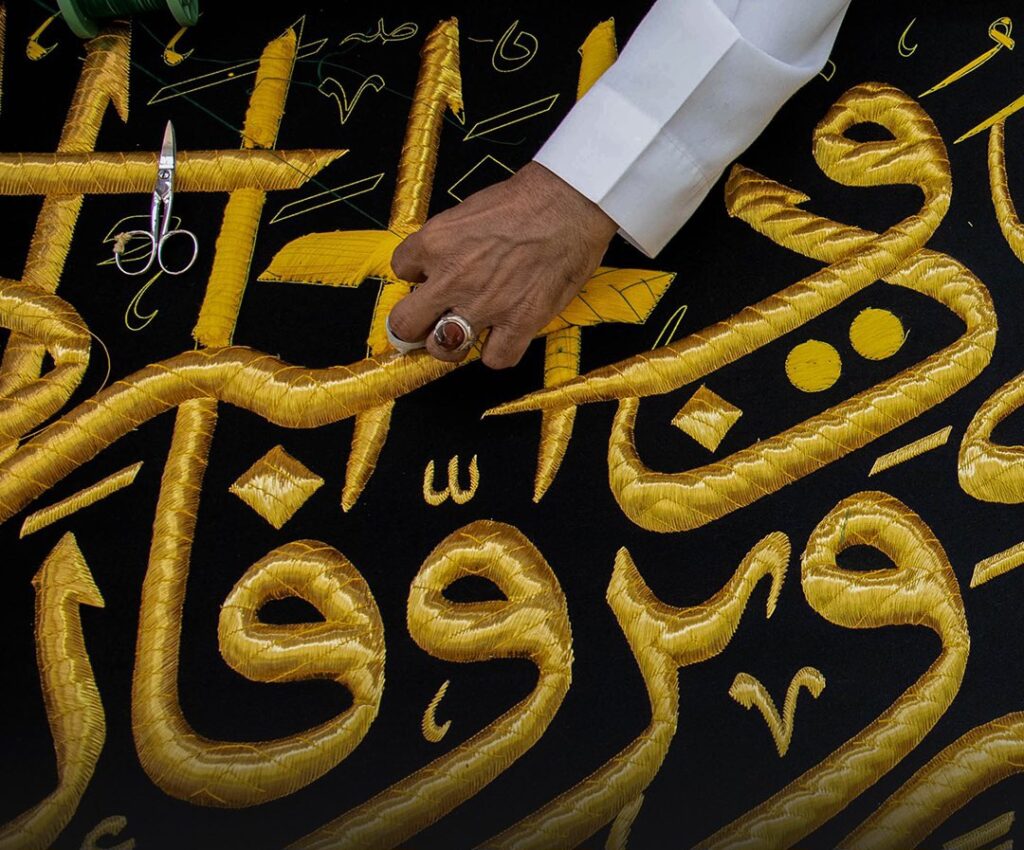
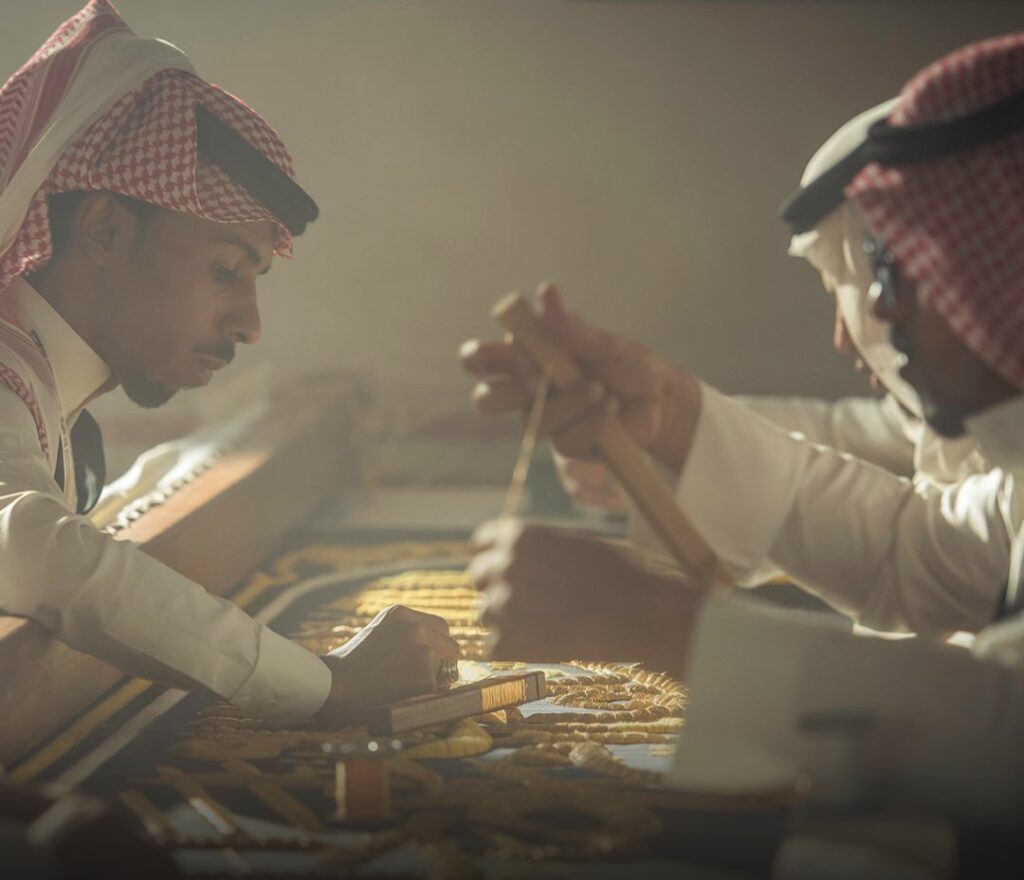
The Kiswah also has a portion of the strap that wraps around to hold it in place. Measuring 46 meters in length and 95 cm in width, it is made of 16 pieces and is also embroidered with Quranic verses.
The Kiswah includes a curtain for the door of the Kaaba. The embroidered curtain on the door of the Kaaba was put on the Kaaba gate in 1300-1396 (819 Hijri calendar).
Changes through ages
The Kiswah was usually changed every year on the ninth or tenth day of Dhul-Hijjah, the last month of the Islamic calendar, but it was moved to the first day of Muharram last year.
The Kiswah have seen regular changes through the ages. It was covered once in red, once in white, once in green and at present in black brocade.
An approximate — million riyals have been spent on the preparation of the Ghilaf-e-Kaaba by dozens of weaving experts at a special factory exclusively devoted to the manufacture of the Kiswah.

